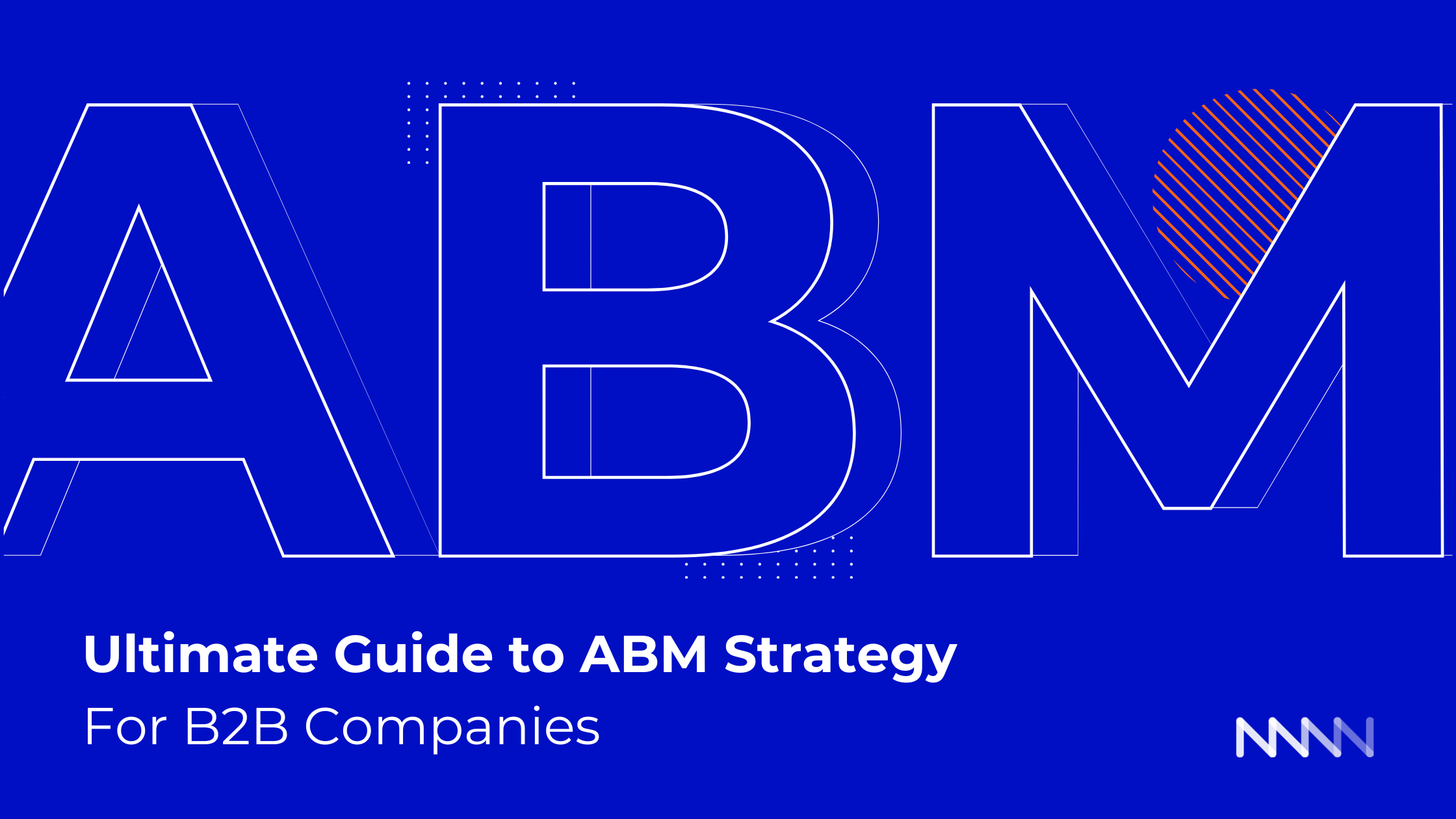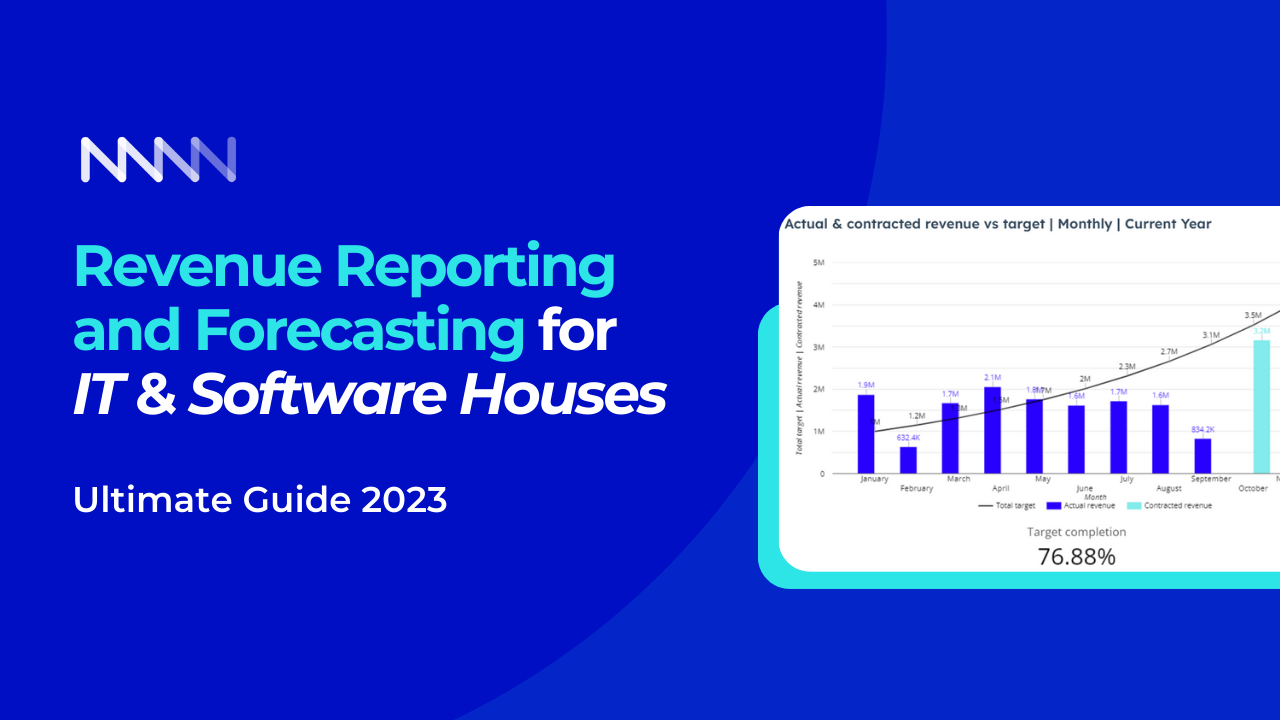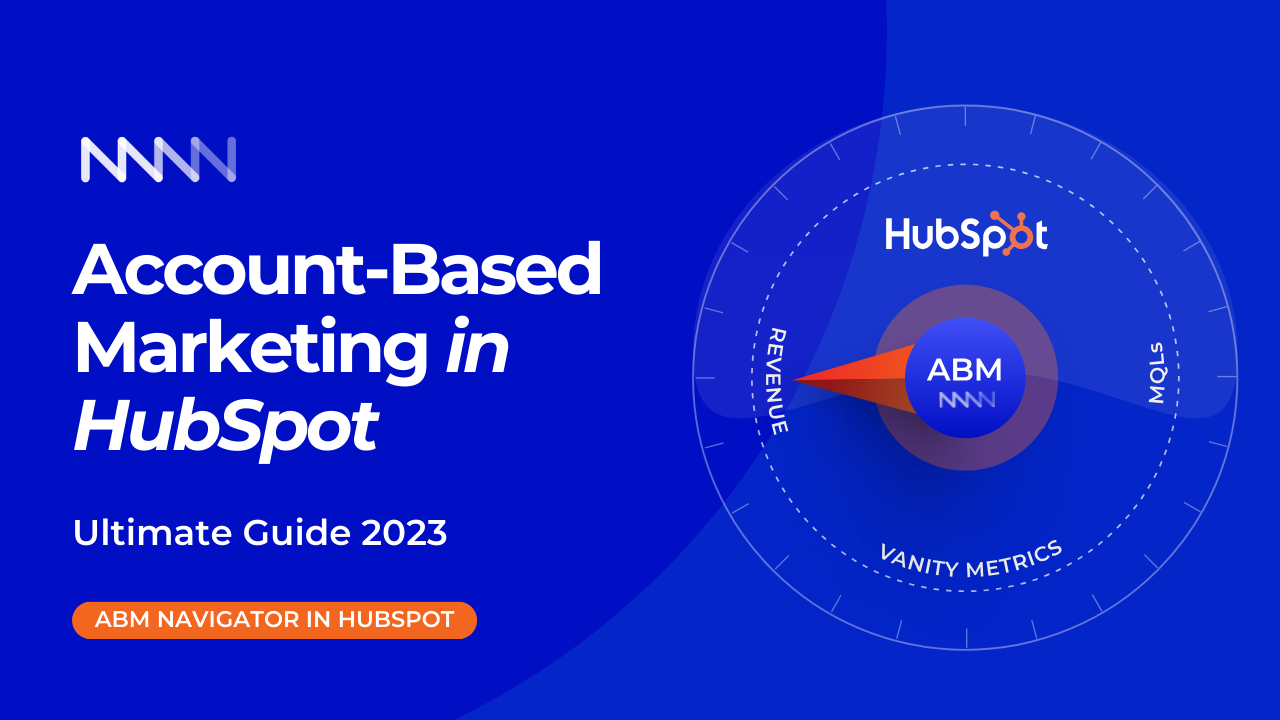11 Hacks with Unbelievable Outcomes For Your B2B Competitor Analysis
This part is very important for the success of your marketing campaign, as you want to gather as much knowledge about your competitors as you can and reverse engineer what they do with their own online marketing.
I will be showing you free and paid tools. Obviously, if you are using premium tools you’ll gather more data, but you’ll be able to get a bunch of good and valuable data with free tools as well.
It is very important that you document your research.
Key points in this blog post
- We’ll use the Follow.net chrome extension and SimilarWeb to learn more about the monthly traffic of our competition.
- Use Alexa.com to gather more information on the demographics and the geography of their traffic.
- We’ll look at SEMrush and Alexa to see their top pages and if they have any paid traffic.
- We’ll also take a look at
iSpionage and SpyFu to check their advertising budget on PPC. - Use Adbeat or WhatRunsWhere to see their display ads, placements, ad networks, and even their landing pages - these are high value, amazing tools if you want to save money on your advertising budget.
- Find out what your competition's most shared and read content is online by using BuzzSumo.
- Use AdEspresso to check profitable Facebook ads and advanced techniques to uncover any online advertiser strategies.
- Use BuiltWith to check what technology they use to build their website and track their visitors. Which is also a great tool for prospecting leads.
Before we get started, open Notepad or Evernote (my preferred note app). Here is a template I made in Evernote that you could use to
Table of Contents
This part is very important for the success of your marketing campaign, as you want to gather as much knowledge about your competitors as you can and reverse engineer what they do with their own online marketing.
I will be showing you free and paid tools. Obviously, if you are using premium tools you’ll gather more data, but you’ll be able to get a bunch of good and valuable data with free tools as well.
It is very important that you document your research.
Key points in this blog post
- We’ll use the Follow.net chrome extension and SimilarWeb to learn more about the monthly traffic of our competition.
- Use Alexa.com to gather more information on the demographics and the geography of their traffic.
- We’ll look at SEMrush and Alexa to see their top pages and if they have any paid traffic.
- We’ll also take a look at
iSpionage and SpyFu to check their advertising budget on PPC. - Use Adbeat or WhatRunsWhere to see their display ads, placements, ad networks, and even their landing pages - these are high value, amazing tools if you want to save money on your advertising budget.
- Find out what your competition's most shared and read content is online by using BuzzSumo.
- Use AdEspresso to check profitable Facebook ads and advanced techniques to uncover any online advertiser strategies.
- Use BuiltWith to check what technology they use to build their website and track their visitors. Which is also a great tool for prospecting leads.
Before we get started, open Notepad or Evernote (my preferred note app). Here is a template I made in Evernote that you could use to
Traffic Statistics And Traffic Source Data Of Your Competitors
Head to Follow.net and create a free account. You don’t need a paid account for now.
Follow.net is an excellent free research tool that gathers data from many different sources from the Internet and presents it at a glance.
In our example, we will be doing research on Hubspot.com.
After you created a free account, type your competitors’ domains into the URL search bar and make notes in your chosen Notepad on the monthly traffic sections.

Follow.net will gather data from SimilarWeb and Quantcast regarding traffic statistics, but be aware that all of these are just rough estimates and different tools might show different data.
You’ll also get their last 3 months’ traffic sources.
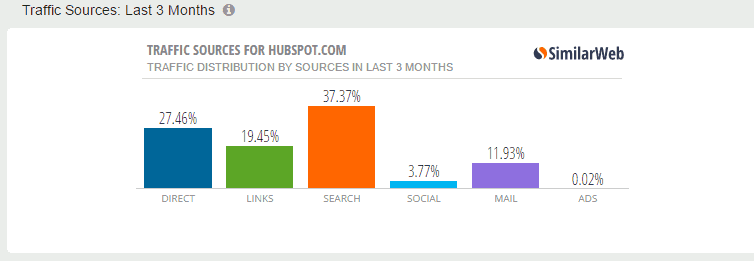
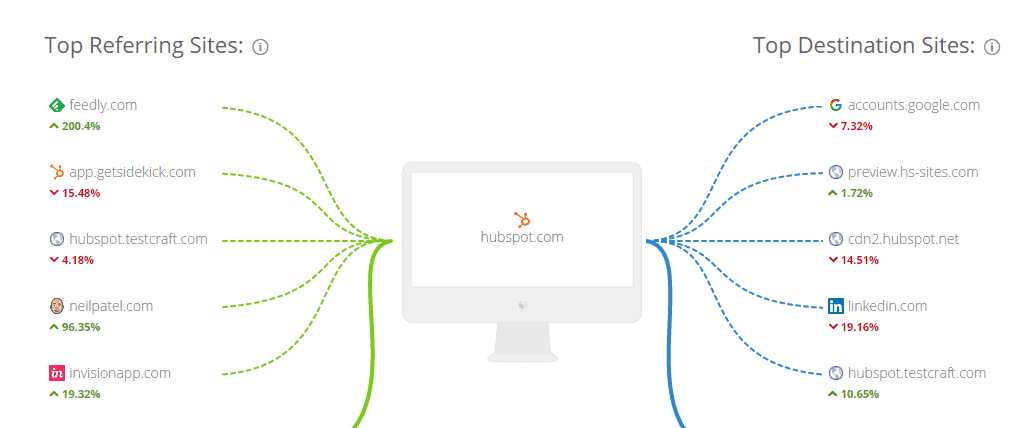
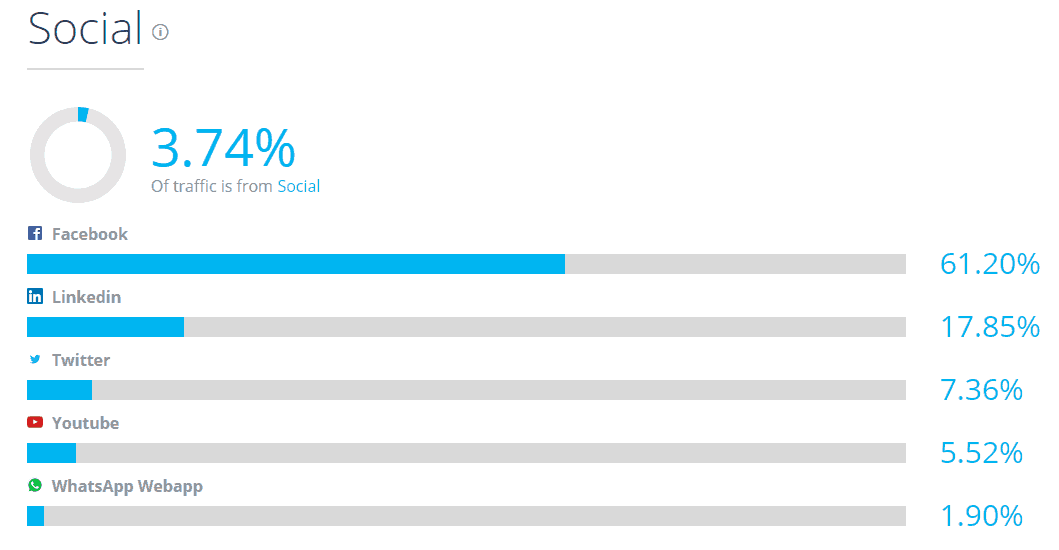
If you have a premium account with SimilarWeb, you can go into even more detail and check only the last
This is a very valuable insight, as you could go out and build a relationship with the same sites to drive targeted traffic to your website.
At MAN Digital, we do such in-depth analyses using SimilarWeb Pro, so just ping us here if you want us to do a free competitor analysis using SimilarWeb Pro.
One very interesting thing we can see with SimilarWeb Pro is its traffic channel analysis.
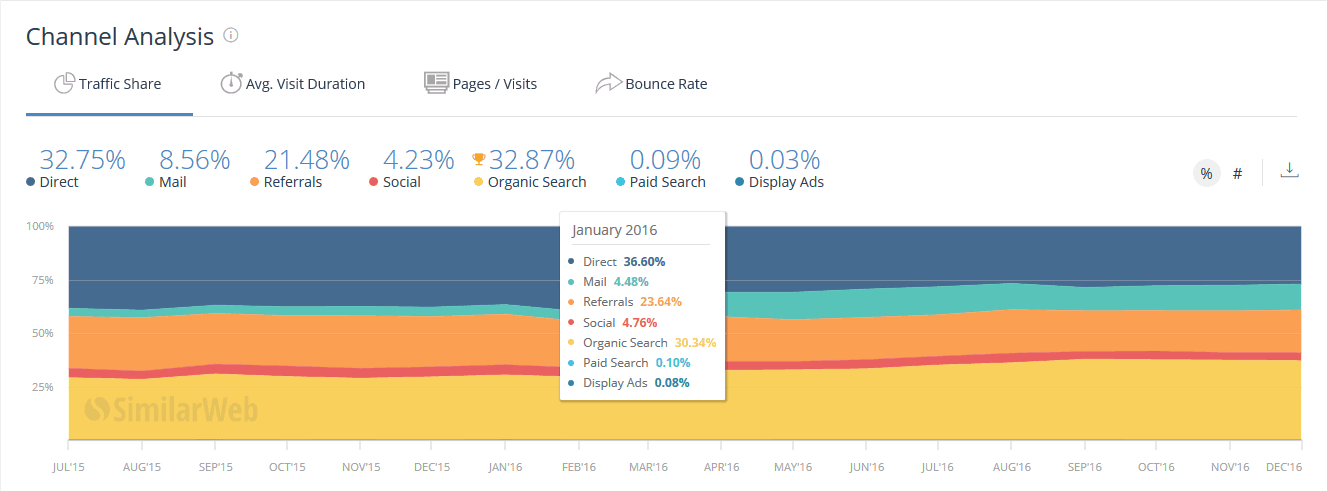
In HubSpot’s example, we can see that Hubspot.com had 4.47% of its traffic coming from emails in March 2016, and starting in April, they tripled this number up to 13% by July 2016. This is a huge change when you have 15M visitors a month.
We’ve just discovered an interesting insight
I can actually vouch for this as I subscribed to their newsletters, and I started to get more content marketing emails from them.
Emails like these:
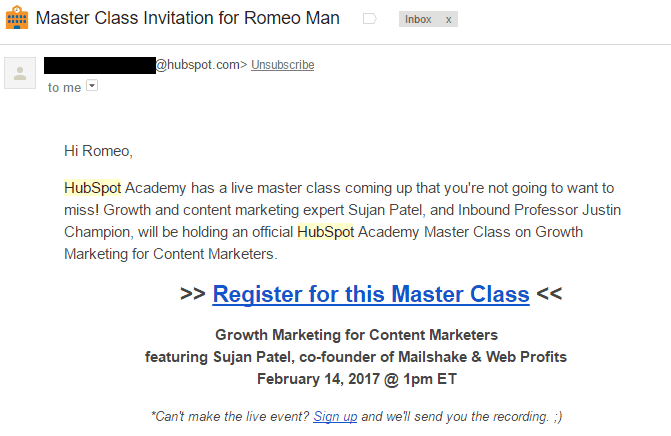
If HubSpot is one of your competitors (which I would not like to have), hop over to their site and subscribe to all their newsletters to see what email marketing campaigns they use.
Demographics And Geography Insights
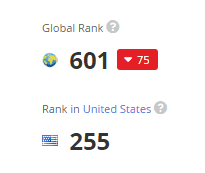
Now that we know about their traffic, let's get more data on their demographics. I just love this tool from Amazon. In my view, it is the best research tool out there, just because Amazon has some data that nobody has at the moment (OK, except for maybe Google).
Just get a free trial on Alexa.com, gather the data, and cancel the subscription before they charge your card; 14 days is more than enough time to gather initial data.
In Alexa, I like to take the global rank of the website just to keep track of who is the best ranked by Alexa among my competitors.
Then we’ve got the geography and demographics, which is my
Here is how it would look:
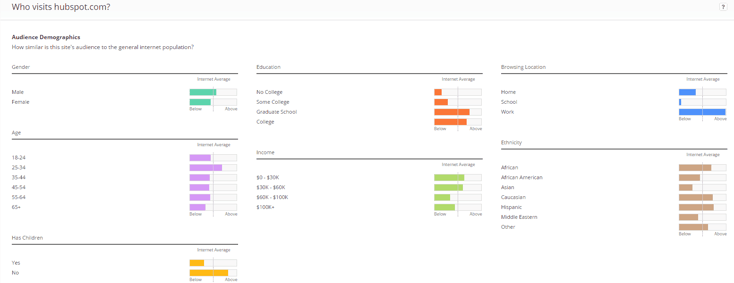
The most important pieces of data for me are Gender, Age, Browsing Location, and Education. I usually make a screenshot of this data and put it in the Evernote along with the other data I have collected.
I also carry out more research on their demographics in Facebook Audience Insights. Just to double check the demographics.
Here is how I do it:
Go to Facebook Audience Insights, select the country you want to
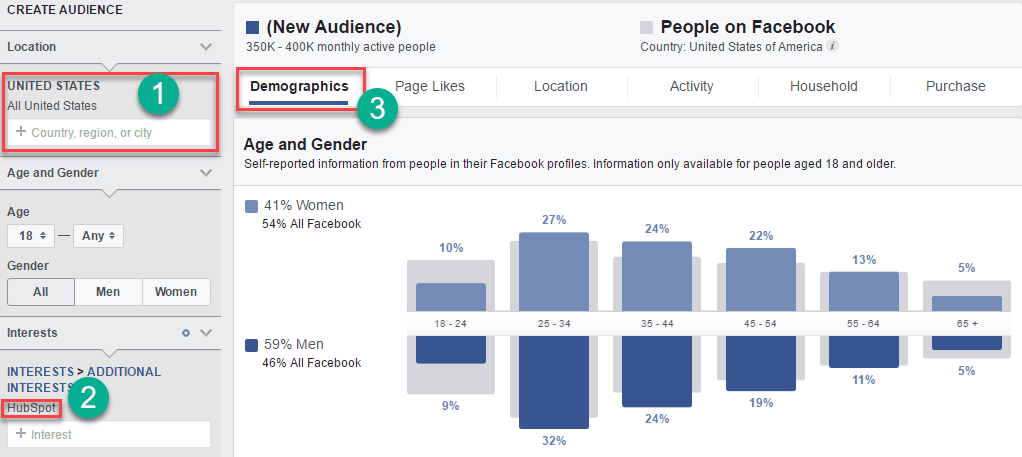
A very interesting section in Audience Insights is the Lifestyle one, which is only available for the US market though. It is a household-level consumer segmentation and
Find out more here, where you’ll find a very detailed report about what each cluster means.

Besides this, you have information about their relationship status and education.
Why do I insist on this?
If you understand the cluster you will understand the customer avatar much better, so you will be able to
Next, go to the “Page Likes” tab, where you will be able to see what other pages this audience likes. This information will help you to gain an even more in-depth understanding of the audience, as well as helping you to create an audience to target on Facebook Ads later on.

OPTIONAL:
If you're active on Twitter, you’ll be able to get some nice data about your followers and learn more about your audience.
Go to Twitter Analytics and choose Audiences. Here you’ll be able to see a very brief overview of your audience.
I am interested in gender, age, interests, buying behavior, occupation, and devices used.

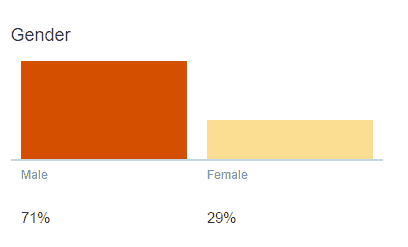

If we take a look at the occupation, the majority of my followers are technical professionals.
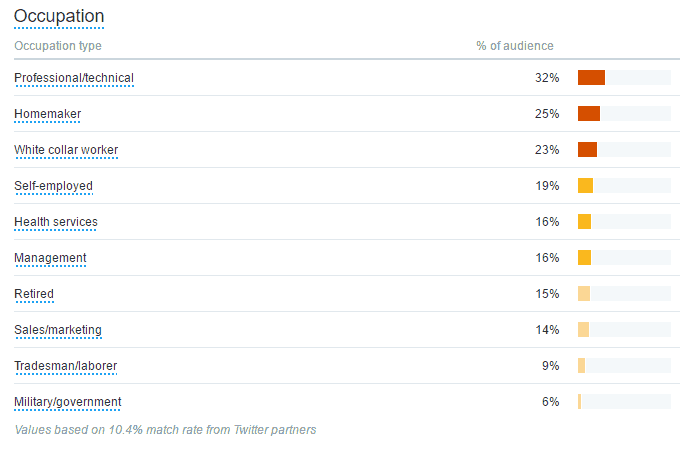
Obviously, they are interested in technology, tech news, and entrepreneurship.
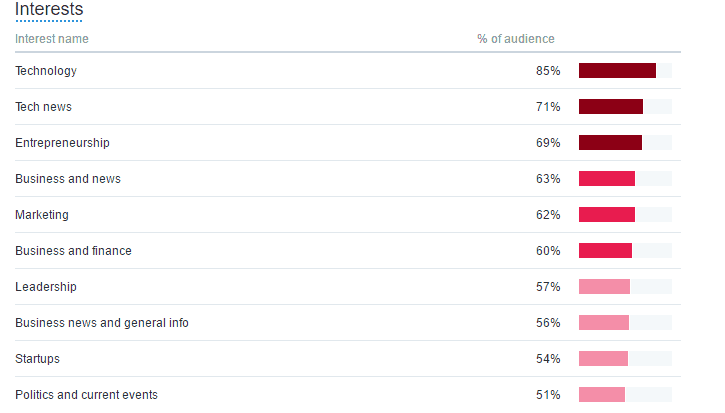
In conclusion, my followers are predominantly male, between 25 and 34 years of age, and are technical professionals. Now, if I compare this with HubSpot’s data from Alexa and Facebook Insights, it is very similar.
Now you might say, OK but these people don’t visit my site. Let’s check that on Google Analytics.
Go onto your Google Analytics (GA), to Audience, and then Demographics > Overview.
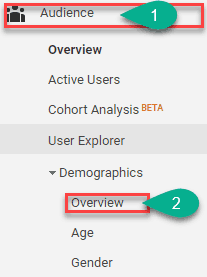
Surprise, surprise: GA also shows similar age and gender statistics to Alexa, Facebook, and Twitter. Now our research is becoming more accurate.

Data from Google is just amazing and it can make our research so much easier. It is in Google's interests at the end of the day, as we (marketers) will spend more on Adwords if we have more tools and targeting data.
If we look at Interests in Google Analytics (Audience > Interests > Overview), we can see that our audience’s interests are also similar to what we found using the other sources.
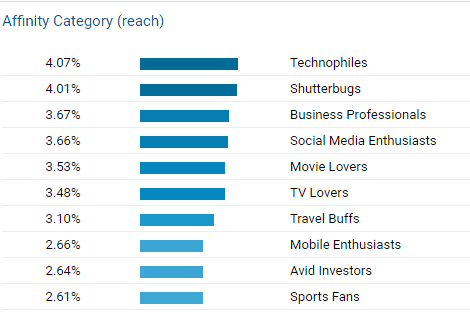
I could talk about Audience Insights for ages. I hope this information has helped you to understand how to gather data so that you can build your buyer persona.
If you have any other specific questions about this topic, please don’t hesitate to ask me them.
Organic and Paid Traffic Keywords Analysis
Why is this part important?
Let’s think a bit about the psychology of searching. Why do we search online?
Go to Spyfu.com; there’s no need to sign up to a premium account for now.
Enter your competitor's domain and check both their organic and paid traffic keywords.

SpyFu is an amazing tool. They collect data, in this case for 10 years, and will estimate the monthly PPC traffic of your competitor.
OK, now, you will not be able to see all their keywords with a free account. If you’re on a tight budget, you should go over to Alexa.com and get a free 7-day trial to collect all the data about your competition.
How To Download All The Organic And Paid Keywords Of Your Competition
Go to Alexa.com/keywords (get a free 7-day trial for the advanced plan) and download both their organic and paid traffic keywords.
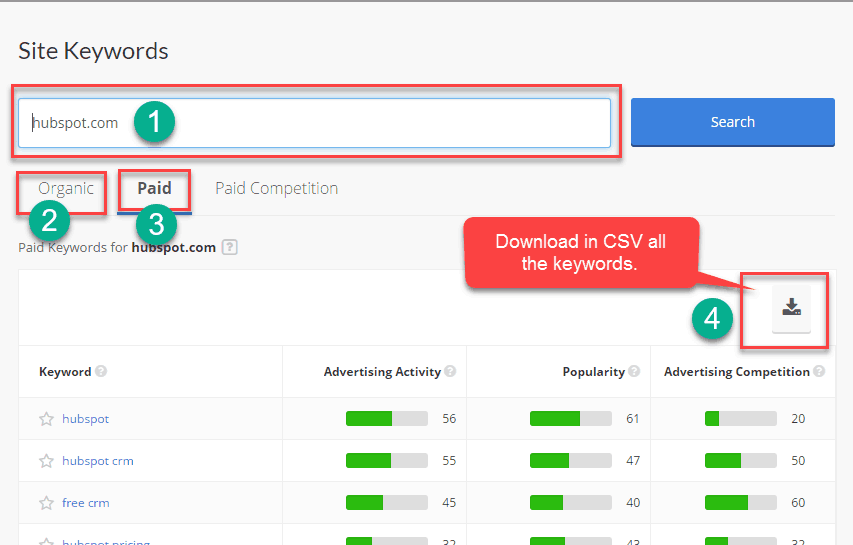
You will now have a full list of keywords your competition is targeting. The organic section will show you the percentage of search traffic that this website is getting monthly.
OK, now you know what keywords your competitor is targeting for paid ads and what they are building their organic traffic for, you have a very good insight into what products or services they are focusing on.
Document this data, as we will use it when we need to build content.
Explore Your Competitors’ Most Valuable Content
As marketers, we need to tell
I love this part of the research, as it makes my life as a marketer so much better. With the following strategies, you will be able to find out what content created by your competition is getting a lot of engagement.
No more guessing what type of content works.
I am using BuzzSumo (free) and Ahrefs (paid) for this research.
Head over to BuzzSumo and under the “most shared” tab, enter the domain of your competition into the search bar. In this case, we’re using “hubspot.com”.
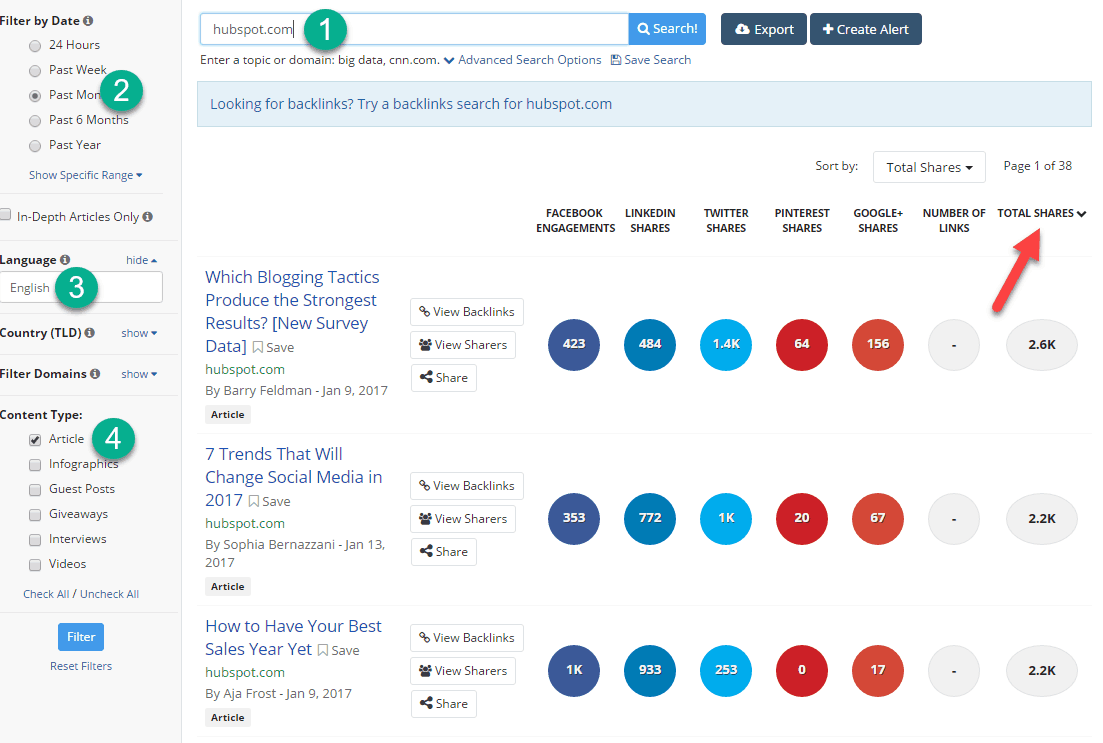
With a free version of the app, you’ll be able to see their top 5 most shared pieces of content, filtered by date, language, and content type.
Now, just document your competition’s best content.
Advanced Techniques For Content Marketing Research
If you are more serious about content marketing, you should also check the backlinks (referring domains) that these articles get.
You want to check their referring domains to know if their audience is referring this content to a resourceful piece of content or not.
Here is how to do it using Ahrefs, and their content explorer feature.
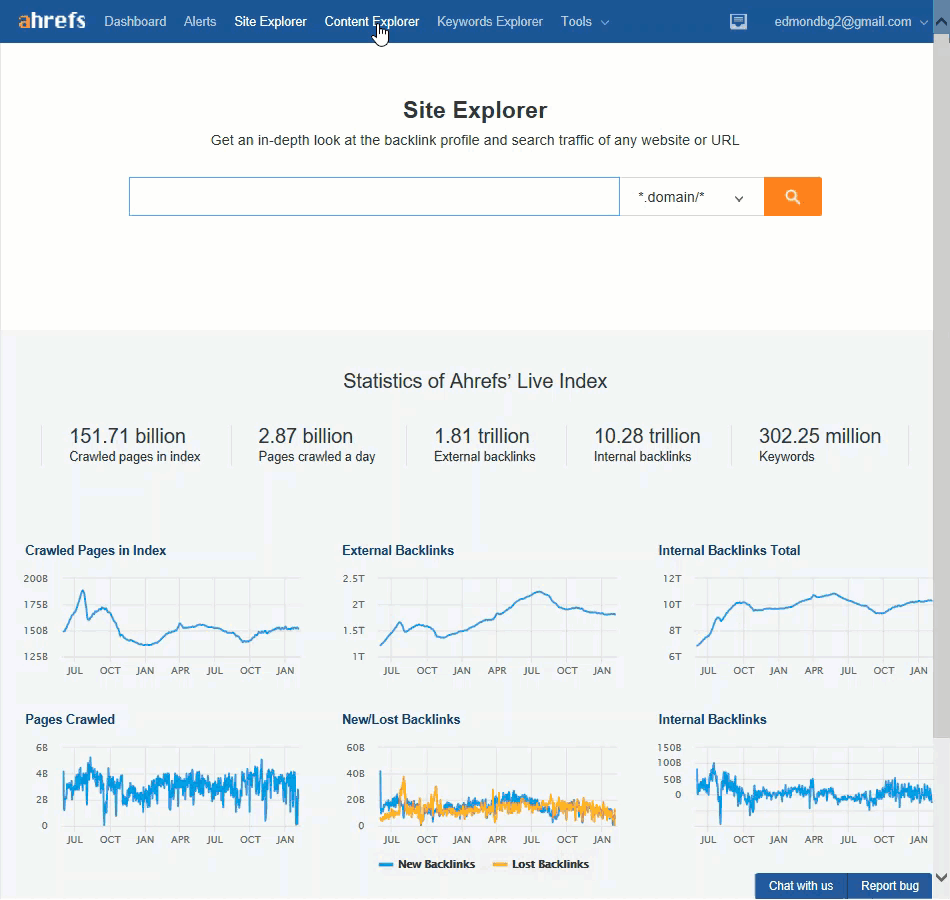
Now you know what your competition's most shared and most referred articles are.
What might be next?
Let’s see where and
Let’s take this article by HubSpot, 42 Visual Content Marketing Statistics You Should Know in 2017. They got 4.9K shares on LinkedIn and over 1.8K referring domains.
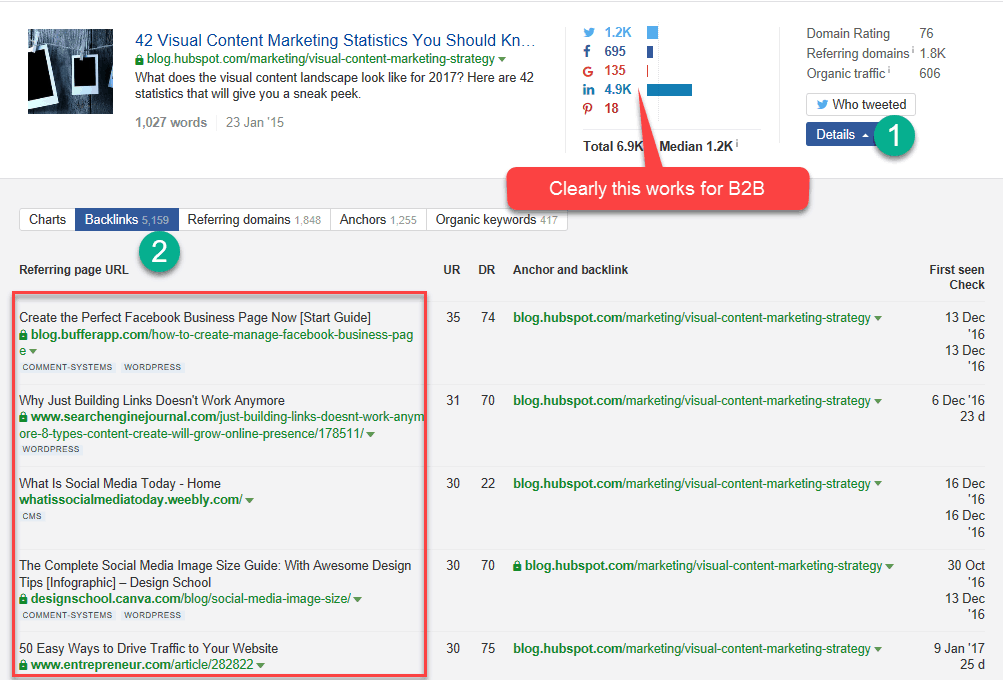
Using Ahrefs, you’ll be able to download all the backlinks and filter by domain ranking.
As a next step, you’ll be outreaching to these domains with your own content and trying to get links back to your site for SEO and targeted traffic.
BuzzSumo and Ahrefs are brilliant tools that we use in our arsenal at MAN Digital. These are the kinds of in-depth pieces of research we do with our clients. If you would like us to build this for you, please don’t hesitate to let us know here.
Spy On Your Competitors’ Advertising Strategies And Systems
Now let’s dive into some even more advanced spying.
In this section, we will be using a few free Chrome add-on tools like Ghostery and BuiltWith, and some enterprise tools such as Adbeat and WhatRunsWhere for advanced online marketers.
First things first.
We want to know if our competitors are using any paid ads or doing any remarketing.
First, we’ll install Chrome apps Ghostery and BuiltWith.
Now head over to your competitor’s domain and check this icon : ![]()
Click on it and you’ll see all the trackers that this domain is using. In HubSpot’s case, they use a bunch of them.
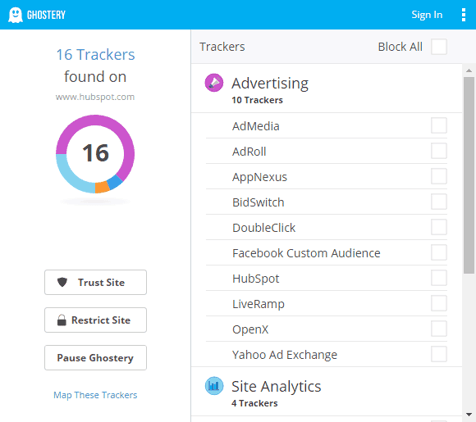
I check for obvious things like:
Are they doing Remarketing?
For this, I check Facebook Custom Audiences and AdRoll.
Are they using AdWords? Or DoubleClick?
What CRM are they using? (Obviously, in this case, they are using HubSpot.) :)
Do they have Google Tag Manager installed or not?
This way, I can decide if they are serious about online paid advertising or not.
OK, now with BuiltWith.com, you’ll be able the check the same but with more details. Also, you can get a full list of contacts using a particular technology that you can help you with prospecting for sales leads.
Look at the advertising, analytics, and tracking sections.
I might also look at their hosting providers. If I see any low-cost hosting providers like Namecheap, GoDaddy, Bluehost, or HostGator, I just note them down and take it as a sign that they don’t have big online marketing budgets (but this is just an assumption).
Advanced Techniques For Uncovering The Online Advertising Strategies Of Your Competition
In this section, we will be using advanced tools to uncover our competitors’ online advertising strategies.
We’ll discover:
- Which display, video, and Facebook
ads they are using - Where they send their ads traffic, and to which landing pages
- Which websites they place their ads on - their placements
- Which ad networks they are using
To do this, we’ll use Adbeat (expensive), WhatRunsWhere (expensive), SEMRush, and AdEspresso.
Disclaimer: some of these tools are enterprise-level pieces of software with costs starting from $200 a month.
See the video below for these advanced techniques.
Get More Insights Into Your Audience’s Voice And How To Create Your Copy
This part is neglected most of the time by many business owners, as it is considered too fluffy.
We want to know what voice is used by our audience, what they are asking online, and what reviews they have written about your competitors or market.
I use 3 main sources for this:
- Business review sites to see what voice is being used by my audience.
- Amazon Books in my niche, where I look at book reviews and tables of content to see what questions are being answered in these books.
- Reddit or Quora to see what my customers’ FAQs are.
I want to find out the following:
- Are these customers satisfied with the value received for the money they have paid?
- What features do they like the most?
- What features are they missing?
- What are the main benefits of using the product?
- What are the most used keywords appearing in the reviews?
- What are the tables of content like in specialty books? What questions do the authors want to answer?
- How are the forewords written in these books?
- What are the most FAQs of my audience?
Research Your Audience’s Business Needs On Niche Review Sites
The first step I take is to research websites that review similar products or services to
For example, I implement Marketing Automation for Small Businesses, therefore, I would like to know the kinds of feedback provided by different marketing automation software users.
For SaaS, I use:
I would look into marketing automation software companies that have a lot of reviews on these platforms and copy the reviews.
On Capterra, they focus a lot on Pros and Cons, so I usually start with this one.
Try to avoid comments like “I love the team at HubSpot”; focus on comments that talk about benefits and case studies.
Things like:
When supplying an automated campaign workflow for a client, they had difficulties getting to grips with the old workflow, as it was complex to look at and figure out how to use. Now it looks much cleaner, intuitive, and easy to use, so I can't wait to show the client! [Source: Capterra]
Works well with social for posting and listening. The blog performance is good too. [Source: G2 Crowd]
It was good when we were a company with less than 25 employees, but as soon as you want to scale, HubSpot cannot handle it. [Source: G2 Crowd]
This last review (which would need to be validated by more reviews) helps me understand that if I were to target HubSpot users, my focus would be SMBs and I would need to concentrate on building my persona based on this.
These comments can help me to write better content, and write my answers to all sorts of objections like these ones.
We carry out comprehensive research into the reviews written about our copywriters or anyone else in the team writing
To visually see the bigger picture in terms of the words most used in reviews, I create a tag cloud using tagul.com.
I made a tag cloud using HubSpot reviews. You’ll get something like this.

Of course, the more reviews you add, the more accurate your tag cloud will be.
Research Niche Books, Quora, And Reddit To Build Better Content
I use this strategy to create better landing page content, blog posts, and online ads.
For this strategy, I research books on Amazon and Blinkist.
Check out the video below to learn how I do it.
- Search for books using services/products as search strings.

- Look inside one of the books.
- Check its table of content and its foreword, and then look for patterns in how chapter titles are constructed.
- Determine the book’s main ideas and jot them down in your Evernote for future inspiration.
- Check a few of the book’s reviews, as these can often also be a very good source of inspiration for finding answers to potential questions.
Note down any chapter titles and book reviews you like, as these will come in handy later on when you’ll be looking for ideas for creating your content.
I also use Blinkist in much the same way as I use Amazon.
The Blinkist team writes summaries about the most important points covered in mainstream books. I love Blinkist as you can also listen to these books, they have a very easy to understand the structure, and the site helps me to understand the main messages that authors want to convey.
Question-and-answer sites are excellent for getting traffic, as well as for researching your audience. Carry out some preliminary research on Quora and Reddit and check if people are looking for the answers to questions you might want to cover.
Note down any FAQs.
Check the answers some companies have provided; many of them will have pitched their product and service. This can serve as inspiration for your own copy and for understanding the voice of your audience.
Conclusions on how to do b2b competitor analysis

Always carry out comprehensive research on your audience and competition and have multiple sources of information.
Start with Alexa and SimilarWeb to understand their traffic statistics and sources, and use SpyFu and SEMRush to look into the keywords that help your competition to get organic and paid traffic.
Facebook Audience Insights, Twitter Audience Insights, and Google Analytics will help you to understand the demographics of your audience. You’ll be able to see a lot of valuable data and build your buyer persona based on this.
Carry out in-depth analyses
To find out more about the voice of your audience so that you can build better content, use book reviews and summaries, research their writing style, as well as using Q&A sites and specific sites that review similar products or services to yours (i.e. G2 Crowd and Capterra for SaaS businesses).

